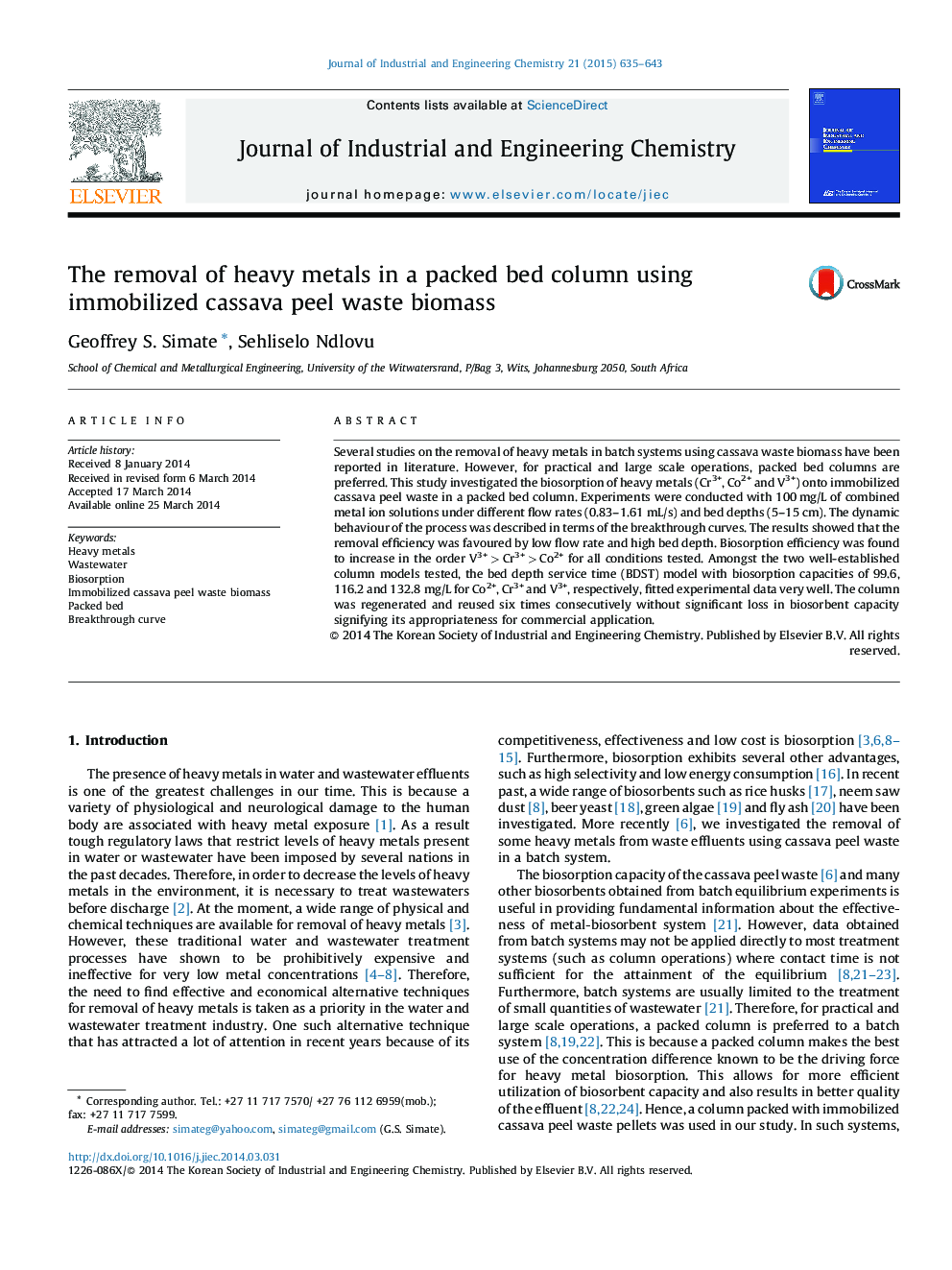| Article ID | Journal | Published Year | Pages | File Type |
|---|---|---|---|---|
| 226961 | Journal of Industrial and Engineering Chemistry | 2015 | 9 Pages |
•A column packed with immobilized cassava biomass was used to remove heavy metals.•The column performed better at lower influent rate and higher bed depth.•There was higher selectivity for V3+ than for Cr3+ and Co2+ at all conditions.•The experimental data fitted the BSDT model better than the Thomas model.
Several studies on the removal of heavy metals in batch systems using cassava waste biomass have been reported in literature. However, for practical and large scale operations, packed bed columns are preferred. This study investigated the biosorption of heavy metals (Cr3+, Co2+ and V3+) onto immobilized cassava peel waste in a packed bed column. Experiments were conducted with 100 mg/L of combined metal ion solutions under different flow rates (0.83–1.61 mL/s) and bed depths (5–15 cm). The dynamic behaviour of the process was described in terms of the breakthrough curves. The results showed that the removal efficiency was favoured by low flow rate and high bed depth. Biosorption efficiency was found to increase in the order V3+ > Cr3+ > Co2+ for all conditions tested. Amongst the two well-established column models tested, the bed depth service time (BDST) model with biosorption capacities of 99.6, 116.2 and 132.8 mg/L for Co2+, Cr3+ and V3+, respectively, fitted experimental data very well. The column was regenerated and reused six times consecutively without significant loss in biosorbent capacity signifying its appropriateness for commercial application.
Graphical abstractFigure optionsDownload full-size imageDownload as PowerPoint slide
